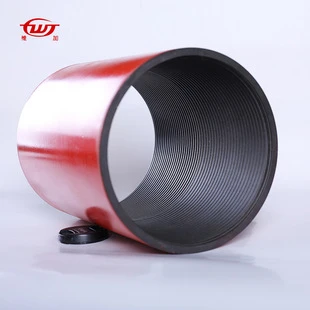- Afrikaans
- Albanian
- Amharic
- Arabic
- Armenian
- Azerbaijani
- Basque
- Belarusian
- Bengali
- Bosnian
- Bulgarian
- Catalan
- Cebuano
- Corsican
- Croatian
- Czech
- Danish
- Dutch
- English
- Esperanto
- Estonian
- Finnish
- French
- Frisian
- Galician
- Georgian
- German
- Greek
- Gujarati
- Haitian Creole
- hausa
- hawaiian
- Hebrew
- Hindi
- Miao
- Hungarian
- Icelandic
- igbo
- Indonesian
- irish
- Italian
- Japanese
- Javanese
- Kannada
- kazakh
- Khmer
- Rwandese
- Korean
- Kurdish
- Kyrgyz
- Lao
- Latin
- Latvian
- Lithuanian
- Luxembourgish
- Macedonian
- Malgashi
- Malay
- Malayalam
- Maltese
- Maori
- Marathi
- Mongolian
- Myanmar
- Nepali
- Norwegian
- Norwegian
- Occitan
- Pashto
- Persian
- Polish
- Portuguese
- Punjabi
- Romanian
- Russian
- Samoan
- Scottish Gaelic
- Serbian
- Sesotho
- Shona
- Sindhi
- Sinhala
- Slovak
- Slovenian
- Somali
- Spanish
- Sundanese
- Swahili
- Swedish
- Tagalog
- Tajik
- Tamil
- Tatar
- Telugu
- Thai
- Turkish
- Turkmen
- Ukrainian
- Urdu
- Uighur
- Uzbek
- Vietnamese
- Welsh
- Bantu
- Yiddish
- Yoruba
- Zulu
casing collar
Understanding Casing Collars in Oil and Gas Operations
In the oil and gas industry, the integrity of drilling operations is paramount. One critical component in ensuring the safety and effectiveness of drilling processes is the casing collar. Casing collars are essential joining pieces used in the construction of the casing string, which is a series of pipes that are installed to stabilize the wellbore and prevent fluid migration. This article delves into the significance, types, and installation processes of casing collars, along with their role in enhancing drilling efficiency.
What is a Casing Collar?
A casing collar is a specialized connector used to link two pieces of casing. Typically made from high-strength steel, collars are designed to withstand the extreme conditions encountered during drilling operations, including high pressures and temperatures. They serve multiple functions, including providing a structural joint, enhancing the tensile strength of the casing string, and facilitating the placement of cement. Casing collars are located at various intervals along the casing string, and their placement is crucial for ensuring the overall stability and integrity of the well.
Types of Casing Collars
Casing collars come in various designs, each tailored for specific applications and operational requirements. The most common types include
1. Standard Collars These are the most basic type and are used in various applications. They are designed to connect two casing sections without special features.
2. Liner Collars Liner collars are used specifically in liner installations, where a liner is run inside an existing casing. They help to secure the liner and prevent it from collapsing or moving.
3. Float Collars Float collars are designed with one-way valves that allow cement to flow down when setting casing but prevent backflow during the cementing process. This is critical in maintaining the integrity of the cement job and ensuring proper bonding.
4. Stage Collars Used for complex cementing operations, stage collars allow for cementing in multiple stages, which is particularly useful in long or deviated wells.
casing collar

5. Cementing Collars Similar to stage collars, these collars facilitate the cementing process, ensuring efficient and effective placement of cement in the annular space.
Installation Process
The installation of casing collars is a meticulous process that demands precision and expertise. Initially, the casing strings are prepared, and the collars are attached to the casing sections as per the drilling plan. During the installation, it is crucial to ensure that the collars are correctly aligned and securely fastened to prevent any mechanical failures during the drilling and completion phases.
Once the casing with the collars is lowered into the wellbore, cement is pumped through the casing and into the annulus between the casing and the borehole wall. Float collars play a decisive role during this stage, permitting the proper flow of cement while preventing the cement from returning up the casing string. After the cement sets, the collars provide the required support and strength to the entire casing structure.
Importance of Casing Collars
Casing collars are fundamental to the success of oil and gas operations. They enhance the stability of the casing string, which, in turn, prevents potential wellbore collapses and mitigates the risks associated with fluid migration. Additionally, the effective use of collar types like float and stage collars can significantly improve the efficiency of cementing jobs, which is critical for establishing zonal isolation in the well.
The design and material properties of casing collars also contribute to the overall sustainability of drilling operations. High-strength steel collars resist corrosive environments and mechanical stresses, extending the life of the casing system and reducing the need for costly repairs.
Conclusion
In summary, casing collars are pivotal components of the oil and gas drilling process. Their robust design and varied types cater to the specific requirements of different drilling scenarios, ensuring the integrity and safety of well operations. As the industry continues to evolve, advancements in casing collar technology will undoubtedly play a significant role in enhancing the efficiency and effectiveness of oil and gas extraction, proving that these seemingly small components are, in fact, crucial to the success of drilling operations worldwide.
-
Well Casing Extension Couplings – Applications and InstallationNewsJun.06,2025
-
Types of Crossover Subs in Drilling & CompletionNewsJun.06,2025
-
Key Features of High-Quality Tubing Pup JointsNewsJun.06,2025
-
Installation and Maintenance Tips for Steel Couplings for PipeNewsJun.06,2025
-
How to Select the Right Pup Joint for Oil & Gas OperationsNewsJun.06,2025
-
Applications of Stainless Steel Pipe CouplingsNewsJun.06,2025







